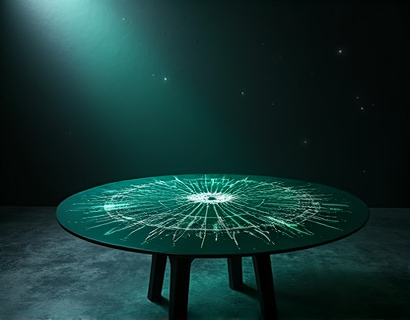Unveiling the Mysteries of the Indus Valley Civilization
The Indus Valley Civilization, one of the oldest and most enigmatic civilizations in human history, flourished around 3300 to 1300 BCE in the northwestern regions of South Asia. Spanning across present-day Pakistan and northwestern India, this ancient culture has captivated historians, archaeologists, and enthusiasts for decades due to its advanced urban planning, sophisticated water management systems, and mysterious script. This article delves into the rich tapestry of the Indus Valley Civilization, exploring its urban centers, art, and artifacts, providing a comprehensive resource for those eager to deepen their understanding of this fascinating era.
Urban Centers and Planning
The Indus Valley Civilization is renowned for its well-planned cities, the most notable being Harappa and Mohenjo-Daro, though other significant sites include Lothal, Dholavira, and Rakhigarhi. These cities exhibit a level of urban planning that was unprecedented for their time. The layout of these cities was methodically organized with a grid system, featuring straight streets and blocks of uniform size. This sophisticated planning suggests a high degree of social organization and administrative control.
One of the most striking features of Indus cities is their advanced drainage and water management systems. Each house had a bathroom with a shower-like facility, and the cities had covered drains made of baked bricks. The Great Bath in Mohenjo-Daro, a large public structure, indicates the importance of ritual purity and possibly religious practices. The presence of wells and cisterns further demonstrates the civilization's understanding of water conservation and management.
Art and Craftsmanship
The art of the Indus Valley Civilization is characterized by its realism and attention to detail. Figurines, seals, and jewelry found at various sites showcase a high level of craftsmanship. Terracotta figurines, often depicting women, are among the most common artifacts. These figurines vary in style but generally exhibit a naturalistic approach, with detailed features and postures. Some figurines are believed to represent deities or fertility symbols, highlighting the religious and cultural significance of these objects.
Seals, another prominent artifact, were likely used for trade and administrative purposes. These seals feature intricate carvings of animals, such as bulls, elephants, and unicorns, alongside human figures. The most famous is the Pashupati seal from Mohenjo-Daro, which some scholars interpret as a depiction of a yoga-like pose, suggesting early forms of spiritual practices. The standardization of these seals across different regions indicates a well-organized trade network and administrative system.
Material Culture and Trade
The Indus Valley Civilization was a hub of trade and commerce, connecting with regions as far as Mesopotamia and the Persian Gulf. Archaeological evidence, including weights and measures, suggests a standardized system for trade. The discovery of Indus seals in Mesopotamian sites and Mesopotamian artifacts in Indus sites underscores the extent of their trade networks. Goods such as cotton textiles, metals, and precious stones were traded, indicating a sophisticated economy.
Ceramic pottery from the Indus Valley is another significant aspect of their material culture. The pottery is known for its fine craftsmanship and variety, including storage jars, cooking pots, and decorative vessels. The use of the potter's wheel is evident, allowing for the production of uniform and high-quality items. Some pottery features intricate designs and inscriptions, providing insights into the daily life and beliefs of the people.
Religion and Belief Systems
While the religious beliefs of the Indus Valley Civilization remain largely unknown due to the undeciphered script, various artifacts and structures offer clues. The presence of fire altars and the Great Bath suggests a religion centered around rituals and purity. Some scholars propose that the civilization had a form of ancestor worship or a nature-based religion, with deities associated with animals and natural elements.
Figurines of what appears to be a mother goddess, often seated with outstretched arms, are common and may indicate a female deity. The lack of depictions of warfare or violent scenes in the art further supports the idea of a peaceful and possibly matriarchal society. However, the absence of clear religious texts or inscriptions leaves many questions unanswered, making the study of Indus religion a fascinating but challenging endeavor.
Deciphering the Script
One of the greatest mysteries of the Indus Valley Civilization is its script, which consists of over 400 distinct signs. Despite extensive efforts, the script remains undeciphered, adding to the allure and intrigue of this ancient culture. The script appears on seals, pottery, and tablets, often in combination with images of animals and deities. Some researchers believe it to be a form of proto-Dravidian, while others suggest it may be a completely unique writing system.
Recent advancements in technology, such as digital imaging and machine learning, have provided new avenues for decipherment. Scholars continue to analyze the context in which the script appears, hoping to find patterns or correlations that could lead to its interpretation. The decipherment of the Indus script would not only shed light on the language and culture but also provide a more complete understanding of this enigmatic civilization.
Decline and Legacy
The decline of the Indus Valley Civilization is a topic of much debate among historians and archaeologists. Various factors have been proposed, including climate change, environmental degradation, and invasions by nomadic tribes. Some researchers suggest a combination of these factors led to the gradual decline and eventual disappearance of the urban centers.
Despite its decline, the legacy of the Indus Valley Civilization endures through its influence on subsequent cultures in the region. The advanced urban planning, water management systems, and craftsmanship continued to inspire later civilizations, such as the Vedic and Harappan cultures. The Indus Valley Civilization remains a crucial part of South Asia's cultural heritage, offering valuable insights into the development of early urban societies and the complexities of ancient human life.
Exploring Exclusive Artifacts
For enthusiasts and scholars, exploring the artifacts of the Indus Valley Civilization offers a tangible connection to this ancient world. Museums and archaeological sites house a wealth of items, from delicate jewelry to large structural elements. Replicas and high-quality reproductions are also available, allowing a broader audience to appreciate the craftsmanship and artistry of the Indus people.
Replicas of seals, figurines, and pottery can be found in various forms, from academic publications to online stores specializing in historical artifacts. These items not only serve as educational tools but also as decorative pieces that bring the Indus Valley Civilization into modern homes and institutions. Collecting and studying these artifacts can deepen one's appreciation for the sophistication and creativity of this ancient culture.
Conclusion
The Indus Valley Civilization remains one of the most fascinating and mysterious ancient cultures, offering a wealth of knowledge and inspiration. Through its advanced urban planning, exquisite art, and intricate trade networks, this civilization provides a window into the past, challenging our understanding of early human societies. For history enthusiasts and cultural scholars, exploring the Indus Valley Civilization is a journey into a world of innovation and beauty, where the legacy of an ancient people continues to captivate and inspire.










































